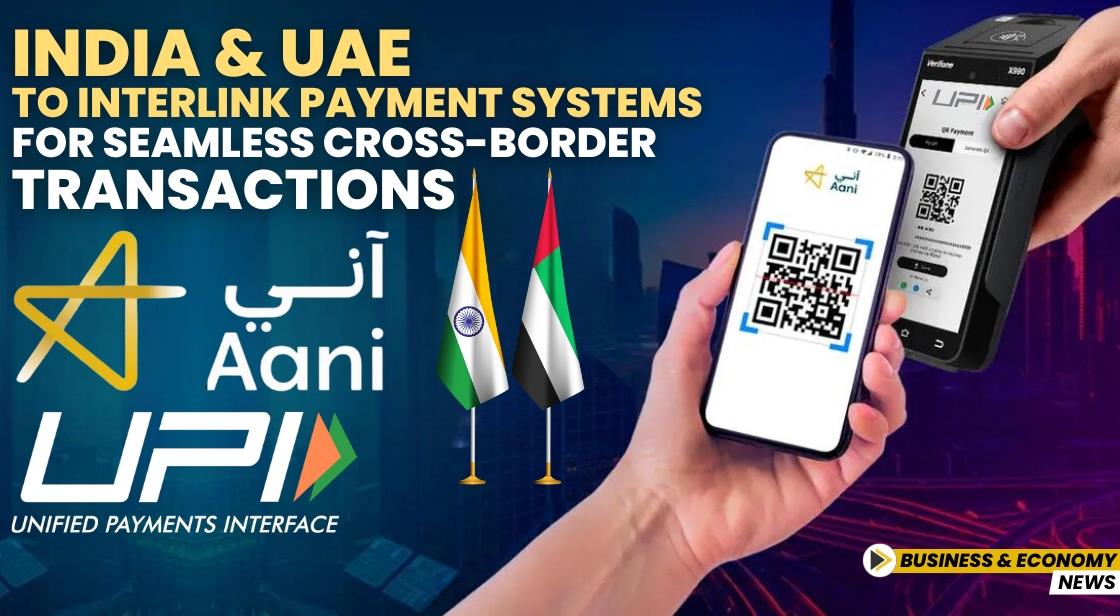India and UAE to Interlink Payment Systems for Seamless Cross-Border Transactions

News Synopsis
In a significant step towards enhancing bilateral economic relations, India and the UAE are set to interlink their payment systems, a move expected to greatly ease cross-border financial transactions. Union Commerce Minister Piyush Goyal announced that India’s Unified Payments Interface (UPI) and the UAE’s AANI system will soon be integrated, enabling smoother and faster money transfers between the two nations.
This development is especially beneficial for the over 3 million Indians residing in the UAE, providing them with a simplified, efficient payment channel for personal remittances and other financial transactions.
This announcement came during a press conference following the 12th meeting of the India-UAE High-Level Joint Task Force on Investment, co-chaired by Sheikh Hamed bin Zayed Al Nahyan, Managing Director of the Abu Dhabi Investment Authority (ADIA), in Mumbai. The task force, which has played a pivotal role in strengthening investment ties between India and the UAE, continues to work towards more integrated economic cooperation between the two nations.
UAE’s Investment in Indian Food Parks
Beyond the payment system integration, the UAE has agreed to invest in food parks across India, with an expected outlay of around $2 billion over the next two to two-and-a-half years. These food parks aim to bolster food security for the UAE while creating job opportunities and enhancing income for Indian farmers.
A joint working group, comprising members from both the central and state governments of India and the UAE, will be set up to expedite the development of these food parks. The initiative is part of a larger effort to establish food corridors between the two countries.
Trade Relations Strengthened by CEPA
Since the implementation of the Comprehensive Economic Partnership Agreement (CEPA), bilateral trade between India and the UAE has flourished, reaching $84 billion during the 2023-24 fiscal year. Importantly, the trade deficit has reduced significantly from $22 billion to $12 billion, reflecting stronger non-oil trade ties. In the first half of 2024, non-oil trade increased by 9.8%, reaching $28.2 billion, further demonstrating the robust growth of trade relations under CEPA.
Surge in Foreign Direct Investment
Foreign Direct Investment (FDI) between India and the UAE has also experienced remarkable growth. The UAE emerged as India's fourth-largest foreign investor in 2023, committing $3.35 billion across various sectors, a threefold increase from 2022. Similarly, Indian FDI in the UAE saw a substantial rise, amounting to $2.05 billion in 2023, which exceeded the combined total of the previous two years.
New Initiatives to Boost Bilateral Relations
In a further effort to promote investment and collaboration, India will establish an Invest India office in Dubai, marking its second overseas office after Singapore. This office will serve as a key point for bilateral investments between the two nations. The UAE is expected to reciprocate by opening a similar office in New Delhi. Additionally, the Indian Institute of Foreign Trade (IIFT) will set up its first overseas campus in Dubai, with short- and medium-term training programs anticipated to begin by early 2025.
Moreover, a significant retail and logistics project, Bharat Mart, is under development in Dubai. Spread over 100,000 square meters, this facility will provide Indian businesses with access to world-class logistics, combining the benefits of both free zone and mainland retail markets. Bharat Mart is projected to be completed by 2026, and over 9,000 expressions of interest have already been received for 1,400 units.
Conclusion
The interlinking of payment systems between India and the UAE is a major step in fostering closer economic ties. Combined with growing investments and trade, including the setup of food parks and bilateral offices, the relationship between these two nations is set to deepen further. The UPI-AANI interlink is expected to revolutionize cross-border financial exchanges, while ongoing efforts such as the CEPA agreement continue to yield positive outcomes for both countries.
You May Like









